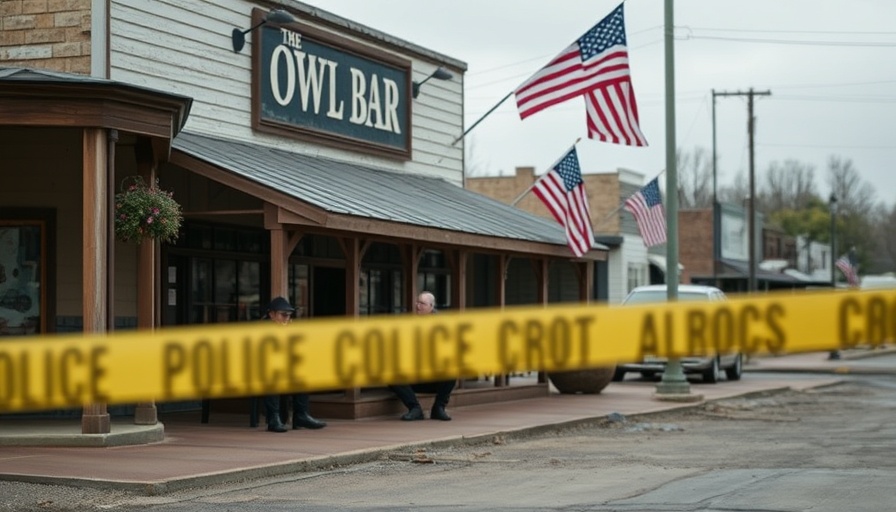
Uncovering a Tragedy: The Case of the LaPlace Woman
This past weekend, a poignant tragedy unfolded on the banks of the Mississippi River in LaPlace, Louisiana, where the body of a woman was discovered. Quickly, the authorities launched an investigation that led to the identification of the woman through tattoos that a family member recognized after the police made their descriptions public.
Background on the Investigation
The body was found on Saturday evening and was subsequently confirmed by a grieving family member on Monday. The St. John the Baptist Parish Sheriff's Office played a crucial role in communicating with the public, outlining distinctive tattoos on the woman's body that eventually helped in confirming her identity. Such a cooperative effort underscores the importance of community support in investigations, highlighting how public awareness can assist law enforcement in solving cases more efficiently.
Community Reaction: Grief and Concern
The community of LaPlace has been shaken by this event, raising concerns about safety and the tragic loss of life. Local residents expressed sorrow and shock at learning about the situation, emphasizing not just the woman's untimely death but also the need to address violence and safety in their area. This tragedy resonates deeply within the community, reminding everyone of the importance of vigilance and proactive engagement in preventing such incidents.
Understanding the Impact of Tattoos in Identifications
Tattoos often tell a story about an individual, representing personal milestones, beliefs, or affiliations. In this case, they became instrumental in identifying the deceased woman. Law enforcement's choice to publicize tattoo descriptions reveals a broader strategy that balances privacy with the necessity of solving crimes. Tattoos can also serve as a double-edged sword in this context, reminding us of the connection between identity and self-expression.
Addressing the Bigger Picture: Violence Against Women
This tragedy serves as a stark reminder of the ongoing issues of violence against women globally. According to the World Health Organization, one in three women experience physical or sexual violence in their lifetime, often at the hands of someone they know. Awareness and community action are pivotal in tackling respect and protection for vulnerable individuals. As we process the loss of this woman, it’s imperative to engage in conversations about prevention, community safety, and the resources available for those in need.
Future Considerations: Wings of Change for Local Policies
In the aftermath of such heartbreaking incidents, communities often rally for change. The incident may soon spark discussions at local forums about enhancing policing techniques, community vigilance programs, and support resources for families affected by violence. Moving forward, advocacy for systemic policy changes, particularly those focusing on domestic violence and community safety, could emerge as local leaders recognize their role in prioritizing citizen welfare.
Conclusion: Responding to Community Grieving
The identification of the woman found in the Mississippi River has ushered in a wave of mourning throughout LaPlace. Her story, although tinged with sadness, is a call to action for greater mindfulness about the community’s safety and the plight of the vulnerable. It is vital to continue to raise awareness about such issues and engage in constructive dialogue around them as a community.
This tragic event not only highlights the immediate concerns of safety and community engagement but also serves as an 'urgent push' for systemic improvement. It calls for both individual and collective responsibility to ensure such tragedies do not become the norm. If you are concerned about your safety or know someone who might be struggling, reach out to local authorities or community support groups. Every voice matters in making a difference.
 Add Row
Add Row  Add
Add 



Write A Comment